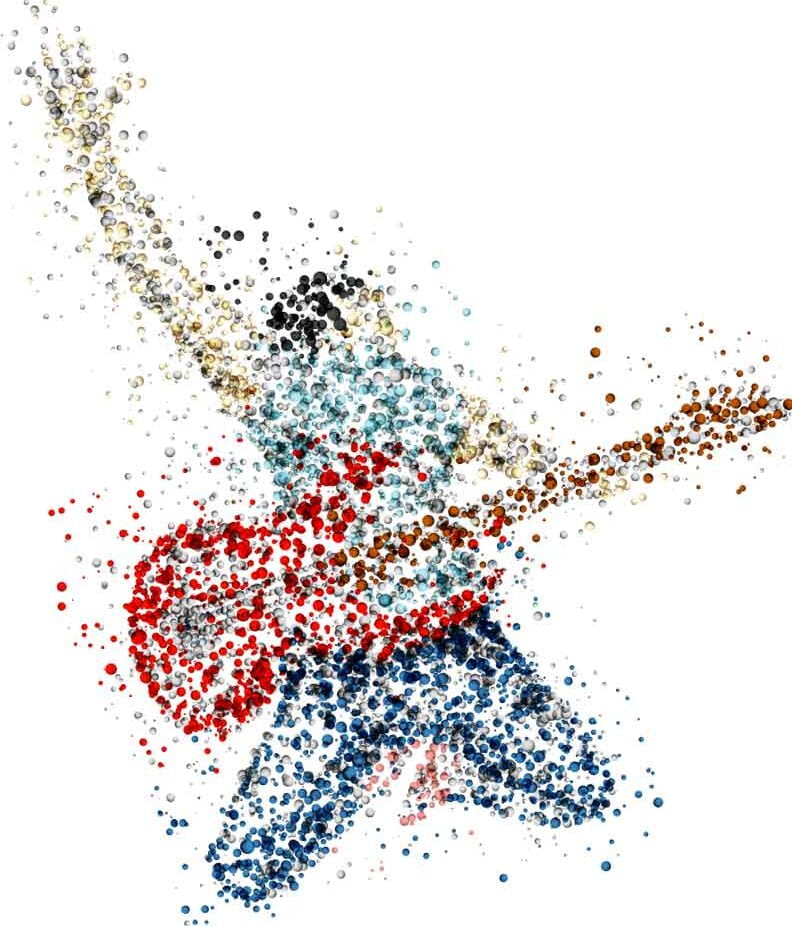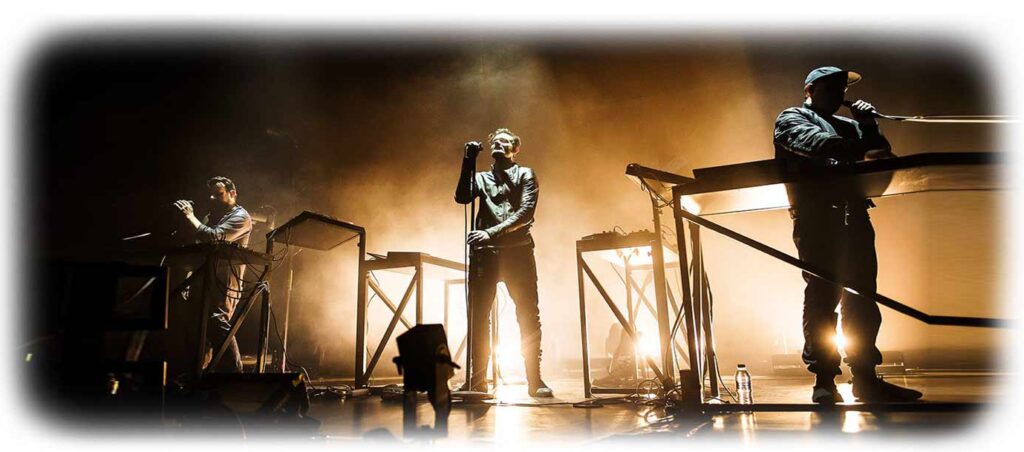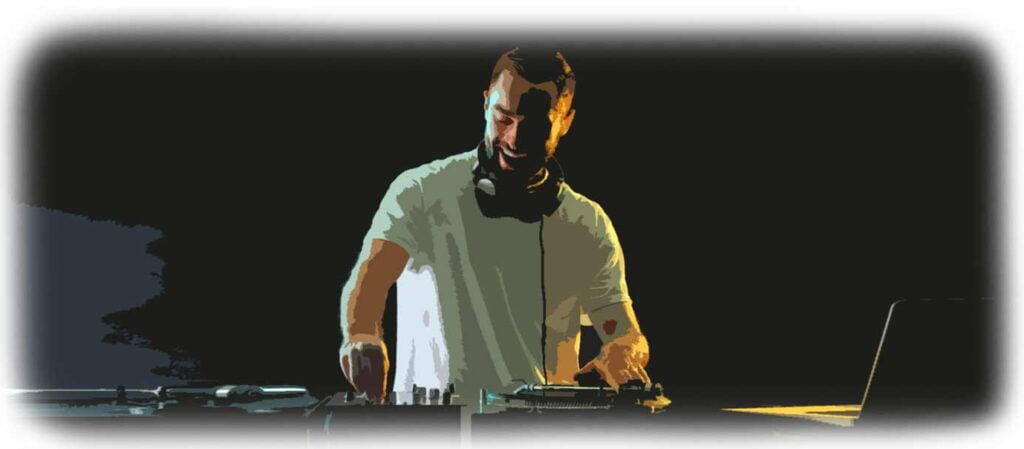Are you a music enthusiast who wants to produce music like a pro? Or maybe you’re an aspiring musician who wants to take your music production to the next level? Look no further than a DAW! But what is a DAW, you may ask? In this article, we’ll not only answer that question, but we’ll also provide you with 15 ways to use your DAW like a pro.
In short, a DAW, or Digital Audio Workstation, is software used for recording, editing, and producing audio files. With the help of a DAW, you can create professional-quality music right from the comfort of your home. From recording and editing to mixing and mastering, a DAW has got you covered. In this article, we’ll guide you through 15 essential tips and tricks to help you make the most out of your DAW.
Whether you’re a beginner or a seasoned pro, our expert tips will surely help you improve your music production skills. With the help of our tips, you’ll learn how to optimize your workflow, enhance your sound quality, and achieve the perfect mix. So, get ready to take your music production game to the next level with our comprehensive guide on how to use a DAW like a pro. Let’s dive in!
WHAT CAN YOU USE A DAW FOR
Let me demonstrate the boundless possibilities of modern digital audio workstations (DAWs) that can take your audio production to the next level. DAWs are not just tools to edit and produce songs, albums, and mixes but also to create stunning soundscapes for podcasts, narrations, film scores, and even sound effects for video games.

Gone are the days when you had to use separate software for each audio-related task. A DAW is an all-in-one solution that simplifies the process of recording, editing, mixing, and mastering. With the help of DAWs, you can add effects, adjust EQs, apply compression, and do so much more. The versatility of these applications is impressive.
You can create radio shows with intros, outros, and jingles, and even do voice acting for animations or audiobooks. You can also collaborate with other musicians and producers, sharing your work online through cloud-based platforms.
DAWs have revolutionized the audio industry, making it accessible for everyone to create and share their music and audio creations. From beginners to professionals, anyone can use DAWs to unleash their creativity and produce high-quality audio.
In conclusion, DAWs have transformed the way audio production is done, and their capabilities are endless. If you’re passionate about audio and music production, investing in a good DAW can be the key to unlocking your potential.
Here are 15 essential tips to get the utmost out of it:
1) RECORD AND ARRANGE MUSIC

Recording music and arranging it? A DAW is perfect for that! It has many tools for you to use. Record and tweak tracks as many times as needed, to get the exact sound you want. Automated vocal tuning and real-time tempo changes? You got it! Instrument libraries make it easy to find the right sound without leaving the program.
When you’ve recorded your tracks, arrange them the way you like with the DAW!
2) USE VIRTUAL INSTRUMENTS

Virtual instruments are awesome for adding special sounds to your projects. You can use recorded versions of instruments like piano, violin, drums and more. With virtual instruments you can customize the sound in many ways – like adjusting pitch, volume, panning and resonances. And they let you layer sounds that can’t be done with real instruments. For instance, combine strings and keyboard for an orchestral sound, or add wind chimes to a guitar solo.
Virtual instruments are only limited by your imagination! They offer countless possibilities for creating music.
3) USE CRAZY VSTS

Virtual Studio Technology (VST) plugins are designed for use in Digital Audio Workstations (DAW). They add extra control and options to recording, editing, and effects programs. VSTs create a fuller, more professional sound by adding unexpected textures, such as noise or reverb.
VSTs come in many forms, from vintage-style plug-ins to complex modulation effects.
Beginners can find free VSTs online to help them learn. Examples include Audacity, Pro Tools, and Logic Pro X. These have tutorials that are useful for newbies.
Professionals can explore adventurous sounds with VSTs from developers like Native Instruments, FabFilter, or iZotope.
4) REVERB

Reverb is a must for making your mix sound pro. It creates natural ambience, adding depth and character to any blend. With a reverb plug-in, you can make anything from drums, guitar and vocals to backing vocals and melodic instruments like piano and strings sound more natural.
To make a reverb sound, adjust the envelope of your plug-in first. This sets how long the reverberation will last before fading out. Pre-delay dictates when reflections start in your virtual space. Decay time decides how long each reflection continues before quieting. The “room size” knob modifies the amount of space between echoes in your virtual room.
By playing around with these settings, you can get:
- Tiny rooms with crisp reflections,
- Big halls with smooth tails,
- Faraway echoes.
Each virtual space also changes instruments – from tight club stages great for claps and drums to grandiose church halls for vocals and strings.
5) MAKE SONGS WITHOUT KNOWING HOW TO MAKE SONGS

A Digital Audio Workstation (DAW) offers great benefits when it comes to making quality songs. With no prior music knowledge needed! There’s a range of options to choose from depending on your music goals.
For example, some people use onboard sounds or free samples while others record their own audio. A drag and drop workflow is available for quickly assembling an idea or full song. This method doesn’t require any music theory or sound design knowledge. Yet it still provides an inspirational way to progress from the start to the mixing and mastering.
You can find starter templates inside most DAWs, as well as advanced templates that show how top producers apply effects and arrange their songs. These modern production techniques make it simple for anyone to make successful projects that people will want to listen to twice!
6) YOU CAN USE AUTOTUNE

DAWs such as Ableton Live, ProTools and Logic Pro have advanced pitch correction using Autotune. This plugin can be used to adjust a singer’s pitch or make wild sound effects. For example, you could sharpen vocals during a chorus, or make robotic noises.
You can tailor the Autotune settings to the voice and desired motion. Many systems come with VST plugins that let you process tracks creatively.
7) PERFORM A LIVE SET

Diving into a Digital Audio Workstation (DAW) can be daunting. Many are designed for studio production, not live shows. But, don’t worry! Here’s how to make your DAW the ultimate tour weapon.
- Get familiar with a hardware controller – like Ableton’s Push 2 or Komplete Kontrol S-Series. This way you can control tracks, effects and parameters with ease, and keep both hands free. Use the “learn” function, so the controller automatically picks up signals.
- Decide your signal flow. Think about how many inputs you’ll need, and any special effect processing. Companies like Native Instruments offer bulky yet powerful units. Their Kore products offer multiple inputs, customisable plugins – perfect for shaping sounds onstage.
8) USE YOUR DIGITAL/MIDI KEYBOARD

DAWs are useful, but often overlooked. With a digital or MIDI keyboard, you can recreate real-life instruments by playing clips or synths and recording them. It’s easier to control knobs and levers with a keyboard than with a mouse or computer.
Automation is also possible with a keyboard. This lets you control plugins in real-time, rather than static settings.
Finally, you can program drum loops using a digital/MIDI keyboard. This makes sure they stay in sync throughout the composition and lets you experiment with rhythm.
9) TURN A SAMPLE PSYCHEDELIC

Experiment to turn samples into psychedelic sounds. Mess with timings, such as stretching or compressing certain areas. Use reverb and delay to create atmosphere. Insert your own synthesized elements to harmonize or add texture. Automate effects for intricate sonic manipulations.
With these tips, turn samples into dreamy, psych-tinged masterpieces!
10) PRACTICE AN INSTRUMENT

Connect your Digital Audio Workstation (DAW) with a MIDI-compatible instrument. This way, you can practice without disturbing anyone else.
Learning a new instrument can be tough. But, with your DAW, you can track and record as you learn. Plug-ins and VSTs let you adjust the tempo or mode of the song. This helps you to play it slowly. When you’re confident, switch to a faster speed. This helps to increase your playing skill.
MIDI keyboards let seasoned players show off their skills. You can toggle between different performances. This allows for creative expression and control of sounds.
11) REMIX OR REMASTER A SONG

Remixing or remastering audio lets you be creative with existing tunes and sounds. DAW plugins can be used to mix and match elements from pre-existing tracks for something new. Or, give an old track a modern sound.
Remixing is also a great way to practice audio production basics like EQ, compression, and effects. Plus, editing and arranging music.
Software tools exist to remix or remaster. Your DAW combines these tools into one platform.
12) BECOME A MIXING/MASTERING ENGINEER

Once you have mastered recording, producing, and mixing music with your DAW, you can take your skills to the next level. Become a mixing/mastering engineer!
You will use technology and engineering techniques to produce the highest quality sound. Get recordings and mixes silky smooth and crystal clear.
Mastering engineers can enhance top-end dynamics or focus on low-end depth. They also can add specialized features not found in the DAW. These could include compressors, EQs, reverbs, and other audio effects.
The mixing/mastering engineer helps to bring out the best sound possible!
13) TUNE INSTRUMENT

Tuning an instrument is tricky. But don’t worry – most DAWs have tools to help. These tools can either be in-built or from external software/hardware devices. For example, TC Electronic PolyTune and Korg Pitchblack. They work with many popular DAWs.
With these tuners, tuning the instrument is easy. Every note will be pitch perfect.
14) FIX AUDIO DEGRADATION

Musicians know that audio recordings can suffer from low sound quality. But, there’s a way to fix it! DAWs provide plugins to help restore sound. These often have noise reduction, dynamic compression, multi-band EQ, and harmonic modeling. Experimenting will help find the best sound.
Third-party plugins maximize clean-up and improve sound quality. Find the ones suitable for your setup and create better sounding tracks quickly!
15) EDIT AND PRODUCE PODCASTS

Podcasts are a great way to share your interests and knowledge, as well as to create a dialog with your audience. And, with a Digital Audio Workstation (DAW), you can edit, produce, and assemble them easily.
Connecting with followers is unique and more personal than other forms of communication like text or videos. With editing tools like equalization (EQ) and audio effects like reverb, delay and compression, podcasts will sound professional and clear.
Auto tune and sound bites from movies or TV shows can be used to help keep vocals on pitch in recordings. Dynamic mixing during post-production can create better impact on the listener’s ears. Gating sounds can help clean up podcast tracks by eliminating unwanted background noise and hum.
Creating podcasts is an amazing way to share your knowledge or stories with your audience directly. It’s an intimate setting that lets them learn more about a particular topic from you in real time or on demand across devices – increasing brand awareness no matter where they are.
Frequently Asked Questions
[toggle title=”Q1: What is a DAW?” state=”close”]
A1: A DAW (Digital Audio Workstation) is a software used for recording, editing and producing audio files. It is the modern equivalent of the traditional recording studio, with digital tools and computer-based recording that allow for a wider range of sound manipulation and production options.[/toggle]
[toggle title=”Q2: How do I use a DAW?” state=”close”]
A2: A DAW can be used for a variety of audio tasks, such as recording and editing digital audio, composing and arranging music, mixing and mastering tracks, and creating sound effects. It is used by musicians, producers, sound engineers, and DJs to create music, podcasts, soundtracks, and more.[/toggle]
[toggle title=”Q3: What are some ways to use a DAW like a pro?” state=”close”]
A3: There are many ways to use a DAW like a pro, such as experimenting with different sounds and effects, learning new techniques and tricks, taking advantage of automation tools, and understanding how to mix and master your tracks.[/toggle]



